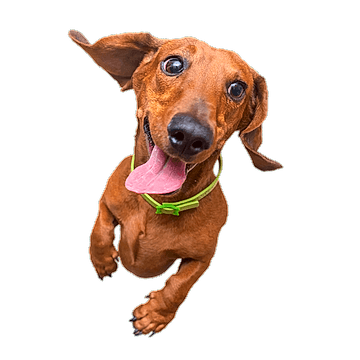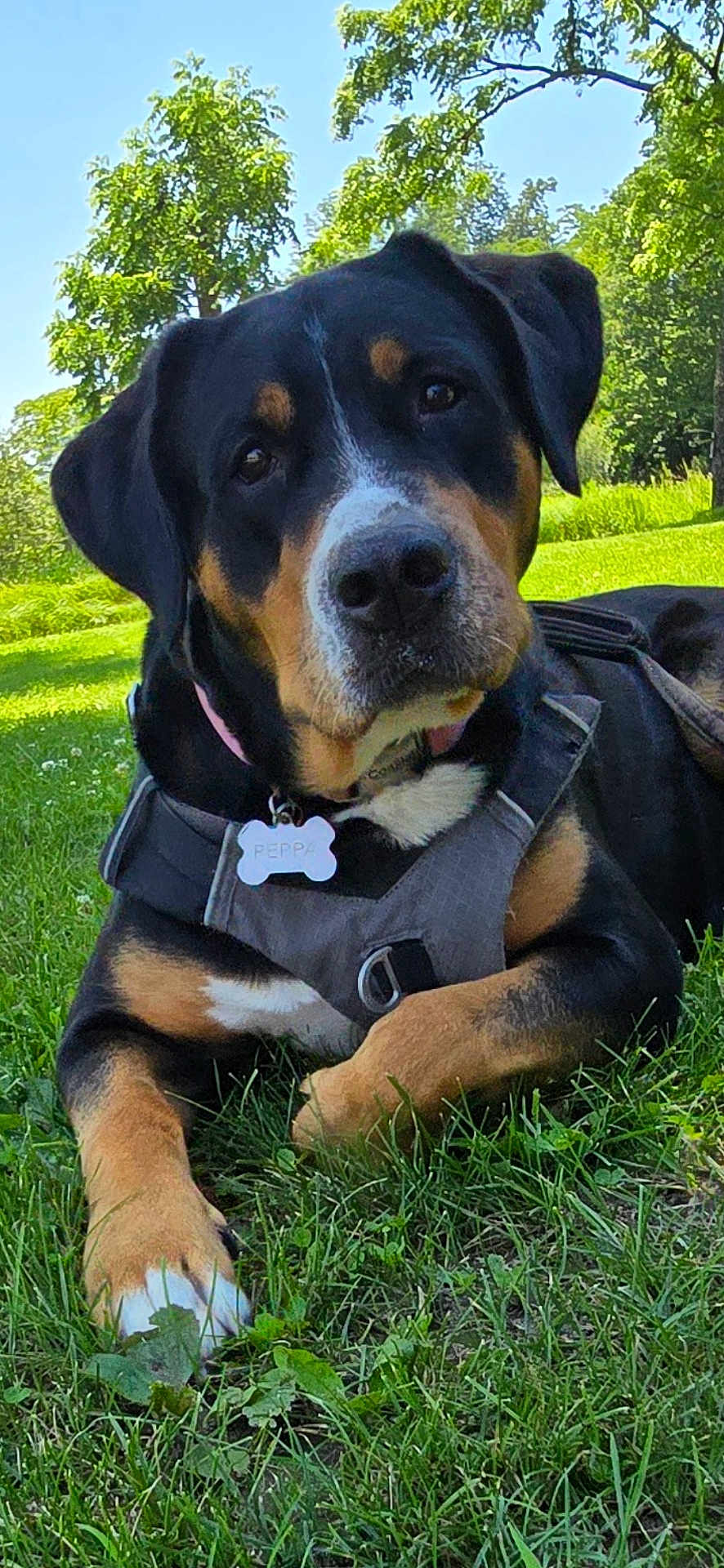"The Greater Swiss Mountain Dog, often referred to as the 'Swissy,' is a striking representation of strength and versatility originally bred for herding and as a draft dog in the Swiss Alps. This majestic breed is revered not only for its imposing size and striking appearance but also for its gentle and loyal nature, making it a beloved companion and working dog."
Personality and Behavior of the Greater Swiss Mountain Dog
The Greater Swiss Mountain Dog, with its deep-rooted history in the Swiss Alps, is known for its robust and adaptable temperament. These dogs are exceptionally loyal and form strong bonds with their families. Typically, they are gentle giants who exhibit a calm and steady demeanor, which makes them excellent family pets, especially for those with children. Their patience and protective nature often endears them to families looking for a trustworthy guardian.
Furthermore, Swissys are known for their alertness and bravery. Historically, they were used as watchdogs, and this trait has carried over into modern times. They are naturally wary of strangers, but not overly aggressive, often displaying a balanced disposition when encountering new people or animals. Additionally, their cheerful and approachable nature ensures they can integrate well into various social settings, making them versatile companions.
Another noteworthy trait of the Greater Swiss Mountain Dog is their impressive work ethic. Bred for heavy-duty tasks like drafting and herding, they thrive on having a job to do. This trait makes them highly trainable and eager to please, which can be beneficial for owners who wish to engage them in activities like obedience training, agility, or even therapy work.
"Interestingly, Greater Swiss Mountain Dogs have a unique tradition; in the past, these magnificent creatures were often used to transport milk and cheese from farms to local markets in rural Switzerland, highlighting their remarkable strength and endurance."
Meanings, History, and Origins of the Name Greater Swiss Mountain Dog
The name "Greater Swiss Mountain Dog" is a direct translation from the German name "Grosser Schweizer Sennenhund," which refers to their considerable size and their origins as mountain dogs of Switzerland. The term "Sennenhund" translates to "herd dog," reflecting their traditional role in assisting alpine herdsmen, or Senn, in managing livestock.
These dogs trace their lineage back to the ancient Molossers brought by Roman legions when they invaded the Swiss region over two thousand years ago. The Molossers, large mastiff-type dogs, interbred with local breeds, leading to the creation of several Swiss mountain dog breeds. Among them, the Greater Swiss Mountain Dog stands out due to its larger size and distinct tri-colored coat.
Their history took a turn towards near extinction in the late 19th century, as mechanization reduced the need for draft animals. However, a revival effort led by Dr. Albert Heim, a Swiss geologist and cynologist, in the early 20th century, helped re-establish the breed. Recognized by the Swiss Kennel Club in 1909, the breed has since flourished and spread across the world.
In addition to their physical attributes, the breed's Swiss heritage is evident in their resilience and hardiness. The harsh Alpine environment shaped them into robust dogs with a strong constitution, capable of withstanding adverse weather conditions—a trait that continues to benefit them today.
Popularity of the Greater Swiss Mountain Dog
The popularity of the Greater Swiss Mountain Dog has seen a steady rise, especially in the past few decades. In English-speaking countries, particularly the United States, the breed has captured the hearts of many dog enthusiasts. This can be attributed to their impressive appearance and balanced temperament, which suits a variety of lifestyle needs from active families to single owners looking for a loyal companion.
The American Kennel Club recognized the Greater Swiss Mountain Dog in 1995, further cementing their presence in the U.S. Since then, they have become a popular choice at dog shows and among families. Their rise in popularity is also aided by positive word-of-mouth and the breed's inclusion in various media portrayals showcasing their majestic yet approachable nature.
Globally, the breed enjoys significant popularity in Switzerland and across Europe, where they are often celebrated for their historical significance and working capabilities. Countries like Germany, France, and the Netherlands also have substantial populations of Swissys, further spreading their reach and recognition.
Social media platforms have contributed significantly to the breed's contemporary popularity. Photos and videos of these endearing dogs attract large followings, leading more people to consider them as ideal pets. The breed's distinct tri-colored coat, defined by black, white, and rust markings, makes them particularly photogenic and appealing to digital audiences.
Health and Care of the Greater Swiss Mountain Dog
Caring for a Greater Swiss Mountain Dog involves attention to their specific health needs and ensuring their overall well-being. This breed is relatively robust, but like all large dogs, they are susceptible to certain health issues that owners should be mindful of. Common concerns include hip dysplasia, elbow dysplasia, and gastric torsion (bloat). Regular veterinary check-ups are essential to monitor their health and catch any potential problems early.
In terms of diet, a well-balanced and nutritious diet is paramount for the Swissy. Due to their size and energy levels, they require a diet rich in high-quality proteins, fats, and essential nutrients. It’s crucial to manage their portions to prevent obesity, which can exacerbate joint issues. Consulting with a veterinarian to tailor a diet specific to their needs can help maintain their robust health.
Exercise is another key component of their care. Greater Swiss Mountain Dogs are active and need regular physical activity to keep them healthy and happy. Daily walks, play sessions, and engaging in activities like hiking or agility courses can suffice. Despite their historical role as working dogs, they don’t necessarily need to engage in high-intensity activities; moderate but consistent exercise is often sufficient.
Grooming needs of the Swissy are relatively modest. Their short coat is easy to maintain with regular brushing to remove loose hair and keep them looking their best. Bathing can be done as needed, and regular check-ups for ear cleanliness, dental health, and nail trimming are important aspects of their grooming routine.
Training and Education of the Greater Swiss Mountain Dog
Training a Greater Swiss Mountain Dog is a rewarding experience due to their intelligent and eager-to-please nature. However, their strong-willed character means that consistent and patient training methods are essential. Early socialization and puppy training classes can set the foundation for well-rounded behavior.
Positive reinforcement techniques, such as treats, praise, and play, work best with Swissys. They respond well to these methods and are more likely to learn and retain commands when they are rewarded for their efforts. Consistency is key; establishing a routine helps them understand expectations and reinforce good behavior.
Owners may encounter challenges due to the breed's independent streak. Patience is crucial, as pushing too hard can lead to resistance. Gentle persistence and making training sessions fun and engaging can overcome this hurdle. Training should also incorporate mental stimulation, as Swissys thrive when challenged intellectually.
For those interested in advanced training, this breed excels in various activities beyond basic obedience. Their historical role as draft dogs makes them excellent candidates for cart pulling and weight pulling competitions. Additionally, their friendly yet alert nature suits them well for therapy work and search and rescue missions.
Training should also include leash manners and proper social behavior around other dogs and people. Given their protective instincts, ensuring they are well-socialized can prevent any over-guarding behaviors and help them remain approachable in diverse environments.
Selecting the right dog breed hinges on various factors such as lifestyle, living space, and personal preferences. For those who appreciate a loyal, hardworking, and gentle giant, the Greater Swiss Mountain Dog stands out as an excellent choice.
In conclusion, the Greater Swiss Mountain Dog offers a harmonious blend of historical significance, striking appearance, and dependable personality. Many of these magnificent dogs participate in KingPet contests, showcasing their charm and gaining both admiration and accolades. For families or individuals looking for a reliable and engaging companion, the Greater Swiss Mountain Dog is a breed that undoubtedly makes a lasting impression.






